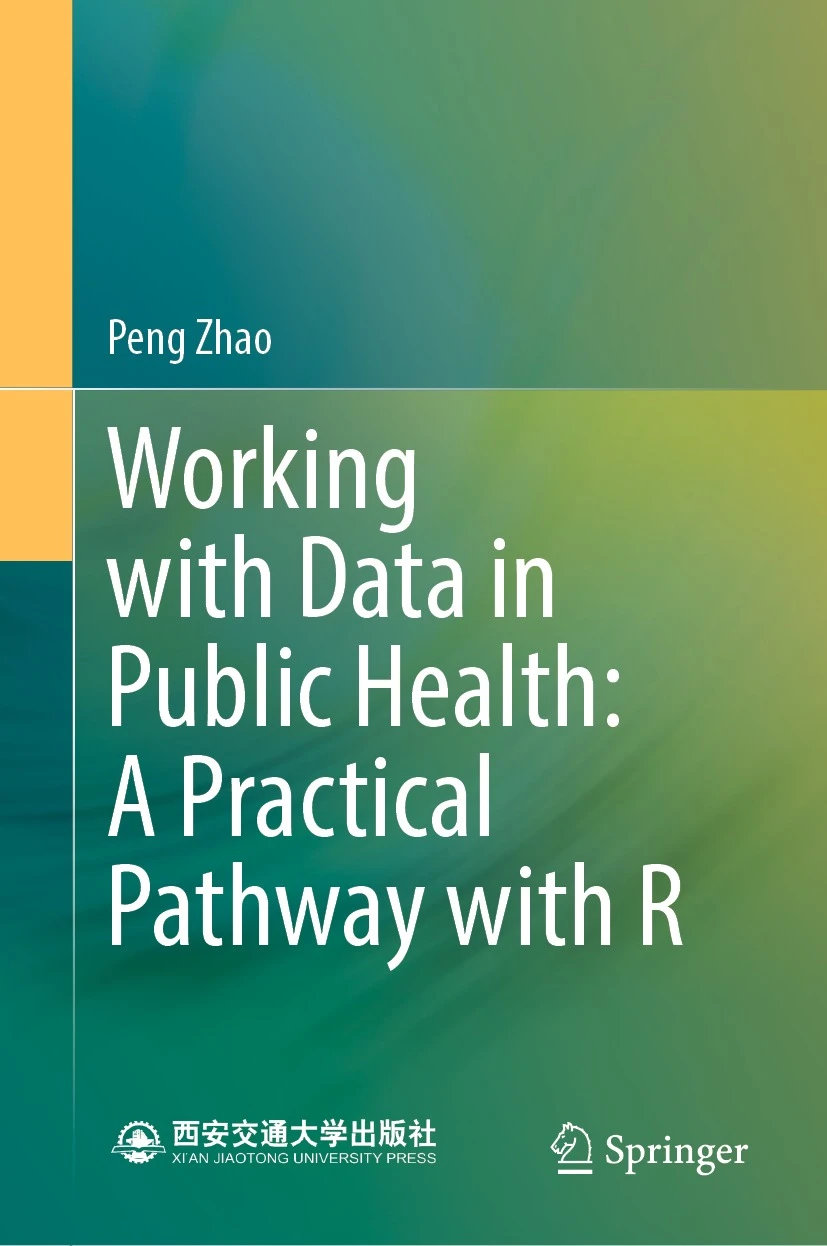Groups | 小组
Books | 书籍
Last updated 7 March 2024 at 8:15
Projects 项目课题
Last updated 10 August 2023 at 13:25
| CODE | BEGIN | END | ROLE | FUNDING | TITLE |
| AISE | 2023-09-01 | 2025-08-31 | CI | XJTLU TDF | Integrating Generative Artificial Intelligence in Automatic Assessment and Personalized Learning in Higher Education |
| MERA | 2023-09-01 | 2026-08-31 | PI | XJTLU PGRS | Methane rises from rivers: are urban rivers missing hotspots? |
| CAMA | 2022-07-01 | 2025-06-30 | Co-PI | Suzhou Science and Technology Bureau | Carbon sequestration and greenhouse gas mitigation paths and modes in Suzhou agricultural ecosystems |
| BITA | 2022-12-01 | 2025-11-30 | PI | XJTLU PGRS/RDF | The exchange of BIoaerosols between Terrestrial ecosystems and the Atmosphere |
| HOHO | 2022-06-01 | 2015-05-31 | CI | XJTLU PGRS | Linking biodiversity with human Health to inform the One Health approach: statistical modeling of comprehensive Open-access environmental and health datasets on the global scale |
| LECO | 2022-01-01 | 2023-12-31 | PI | XJTLU TDF | LEarning via CO-writing a textbook in the post-pandemic era |
| DOPA | 2021-06-01 | 2024-05-31 | CI | XJTLU PGRS/RDF | Degradation of Organic Plastic additives adsorbed on Aerosol particles in the atmosphere |
AISE: Integrating Generative Artificial Intelligence in Automatic Assessment and Personalized Learning in Higher Education
This project proposes the integration of generative artificial intelligence (GenAI) tools with a user-friendly programming language for computer-based assessments in higher education. The aim is to automate the grading process, provide personalized feedback to students, and generate a summary report that can improve the quality and efficiency of computer-based assessments. The project aims to develop a set of tools (apps/software) for these purposes, and they will be available to the community. The project has the potential to enhance teaching, learning, and assessment practices, providing a more engaging and personalized learning experience for students, and time-saving tools for instructors so that they can focus more on other important tasks.
MERA: Methane rises from rivers: are urban rivers missing hotspots?
Urbanization trends have had a significant effect on aquatic ecosystems, which may influence global warming through changes in greenhouse gas (GHG) emission rates. Growing evidence shows that urban river system (URS) may play an important role in GHG emission. CH4 is a potent GHG, with a global warming potential. Aiming to improve the well-being of humans and reduce GHG emissions, carbon neutrality will be achieved by 2060 in China. The proposed research question in this proposal are listed as: 1) how do human activities impact CH4 emission? 2) what would be the contribution of anthropogenic activities to CH4 production from URS? The Stable isotope analysis (SIA) will be utilized to explore CH4 sources and quantify the contribution of human activities. Combined with geospatial technology analysis, the characteristics of CH4 emission will be determined. The results are expected to provide guidance for management measures and effective techniques to mitigate CH4 emissions in URS.
CAMA: Carbon sequestration and greenhouse gas mitigation paths and modes in Suzhou agricultural ecosystems
Enzyme fertilizer is an important bio-organic fertilizer, which has significant effects in improving soil physical and chemical properties, increasing soil organic matter content, and optimizing soil microbial populations. In recent years, excessive application of chemical fertilizers on farmland in Suzhou has led to serious non-point source pollution of farmland ecosystems and aggravated farmland carbon loss. However, there has been no report on the effect of different enzyme bacterial fertilizers on carbon flux under different crop rotation modes, as well as on the effect of carbon sequestration and increase in carbon sequestration. In order to create specialized enzyme fertilizers and assist Suzhou in achieving the "carbon peak and carbon neutrality" goal, this project conducts field observations, lab experiments, and modeling, so as to evaluate the adaptability of various enzyme fertilizers under various crop rotation methods and their impact on the carbon flux of farmland ecosystems.
BITA: The exchange of BIoaerosols between Terrestrial ecosystems and the Atmosphere
Bioaerosols comprise viruses, bacteria, and bacteria agglomerates, fungal and plant spores, and pollen, which widely exist in the atmosphere and have key effects on genetic transport, human health, and climate. However, the knowledge of the transport processes of bioaerosols, especially the vertical exchange of bioaerosols and the factors controlling their atmospheric transport based on observations is very limited due to the lack of advanced measurement techniques. This study will develop and apply a novel direct measurement system by integrating the state-of-the-art micrometeorological technique with the newly developed online bioaerosol sensor, supported by a modern data processing package. Field campaigns will be carried out and provide valuable information on bioaerosol exchange and interaction between terrestrial ecosystems and the atmosphere, which is required to validate and parameterize related global and regional models.
LECO: LEarning via CO-writing a Textbook in the post-pandemic era
Students’ engagement in learning is one of the most important issues in higher education in the 21st century. In the post-pandemic era, blended and online courses require more student self-regulation than traditional courses. Thus, motivational strategies in learning play a key role in supporting student engagement and self-regulation. As a motivational strategy, a textbook co-writing activity will be carried out in one undergraduate module in XJTLU. This activity will be integrated into the module coursework. The students will act as co-authors or main contributors to this textbook under the supervision of the module leader. They will organize the teaching materials and their learning materials, including the theories, demonstrations, exercises, notes, quizzes, etc., into the textbook in a manner of teamwork. The textbook will hopefully be published as an output, which will be a credit to both the students and XJTLU.
